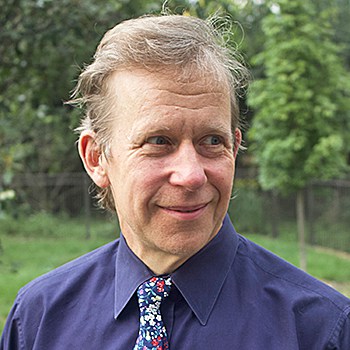Chirality and Complexity of Nanostructures
19th October 2023
Timing : 1 pm EST
Please use this zoom link for joining the webinar
For a list of all talks at the NanoBio seminar Series Fall'23, see here
(a) formation of complex structures does not require monodispersity;
(b) competing thermodynamic restrictions in self-limited systems increase their complexity;
(c) complexity depends on chirality non-linearly;
(d) synthetic particles can have higher complexity than their biological prototypes.
These findings were possible by applying graph theoretical (GT) measures of complexity to nanoparticle assemblies. Their applicability to ‘imperfect’ (nano)particles and ability to capture essential structural motifs of their preferred organization leads to unusual combinations of properties in complex biomimetic materials. The GT description can be expanded to include other nanoscale structures, such as complex porous particles and superlattices,[2] creating analogs of chemical formulas for complex particle systems (chiral, racemic and achiral).
Understanding of intermolecular forces and expansion of self-limited assembly to bulk dispersions of diverse nano(particles) enabled the design of hierarchically organized bowtie-shaped particles with variable twist, size, and thickness and length.[3] Interestingly, they happen to provide an example of chiral chemical structures with chirality continuum as opposed to binary chirality of, for instance, L- or D-amino acids. Analysis of the optical properties of bowties provides insight into the long-standing controversy about chirality measures.
Expanding on the ideas of Murray Gell-Mann, structural complexity and technological significance are related. The simple pathways to complex particle systems with technological significance will be demonstrated for self-assembled chiral catalysts[4] The complex particle systems with technological significance will be demonstrated for self-assembled analogs of cartilage that can be designed using GT for biomedical devices and batteries [5,6].
References
[1] W. Jiang, et al., Emergence of Complexity in Hierarchically Organized Chiral Particles, Science, 2020, 368, 6491, 642-648.
[2] S. Zhou, et al, Chiral assemblies of pinwheel superlattices on substrates, Nature, 2022, 612, 259.
[3] P. Kumar, et al. Photonically Active Bowtie Nanoassemblies with Chirality Continuum, Nature, 2023, 615, 418–424.
[4]. S. Li et al Single- and Multi-Component Chiral Supraparticles As Modular Enantioselective Catalysts, Nature Comm, 2019, 10, 4826.
[5] Wang M. et al., Biomimetic Solid-State Zn2+ Electrolyte for Corrugated Structural Batteries, ACS Nano, 2019; 13(2), 1107. PMID: 3060811
[6] Wang M. et al., Biomorphic Structural Batteries for Robotics. Sci. Robot. 2020, 5; https://doi.org/10.1126/scirobotics.aba1912.
Dr. Nicholas Kotov
Joseph B. and Florence V. Cejka Professor of Chemical Engineering
Department of Chemical Engineering
University of Michigan, Ann Arbor
Professor Kotov has appointments in chemical engineering, biomedical engineering, materials science and engineering, macromolecular science and engineering, and the Biointerfaces Institute. He uses nanoscale fibers and particles to design and build materials that solve specific problems in biology, medicine, environmental science, chemistry, pharmaceuticals and any other field with a problem that captures his interest.
Joseph B. and Florence V. Cejka Professor of Chemical Engineering
Department of Chemical Engineering
University of Michigan, Ann Arbor
Professor Kotov has appointments in chemical engineering, biomedical engineering, materials science and engineering, macromolecular science and engineering, and the Biointerfaces Institute. He uses nanoscale fibers and particles to design and build materials that solve specific problems in biology, medicine, environmental science, chemistry, pharmaceuticals and any other field with a problem that captures his interest.
